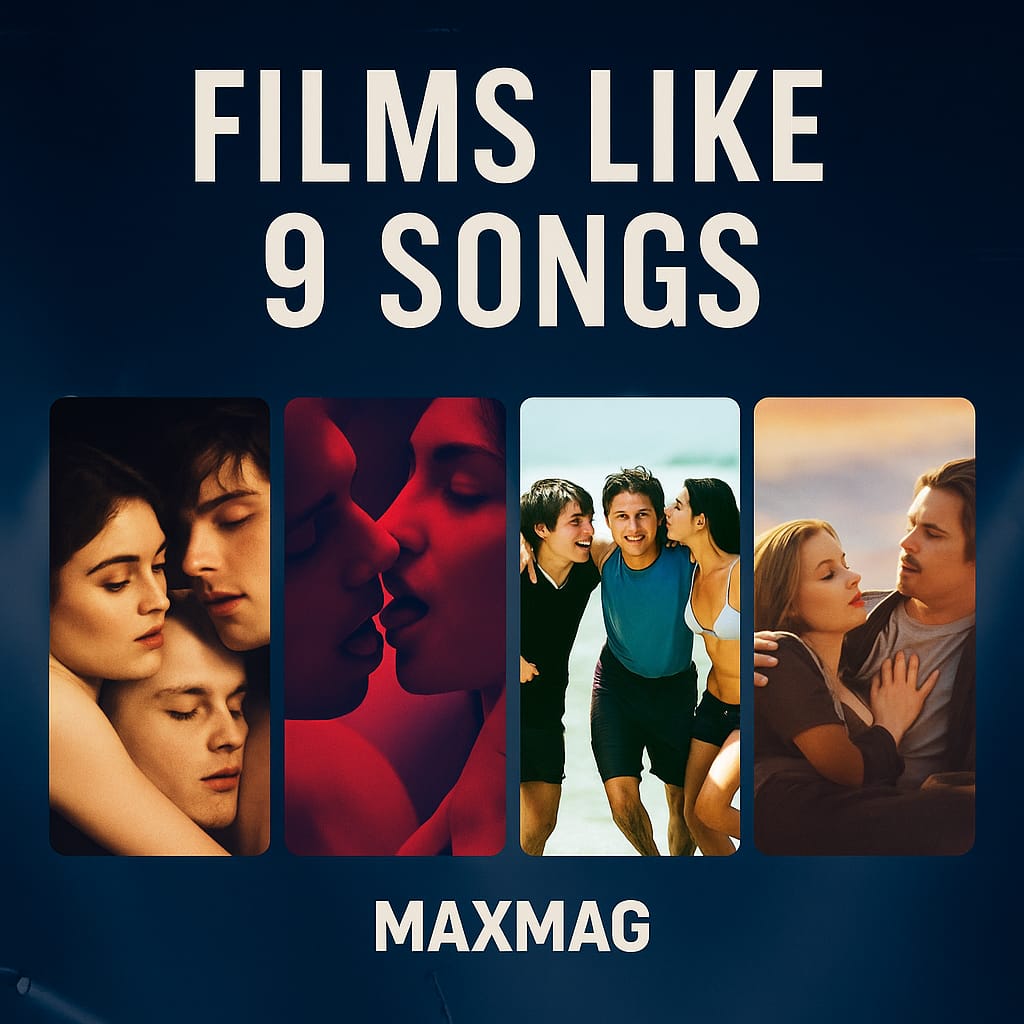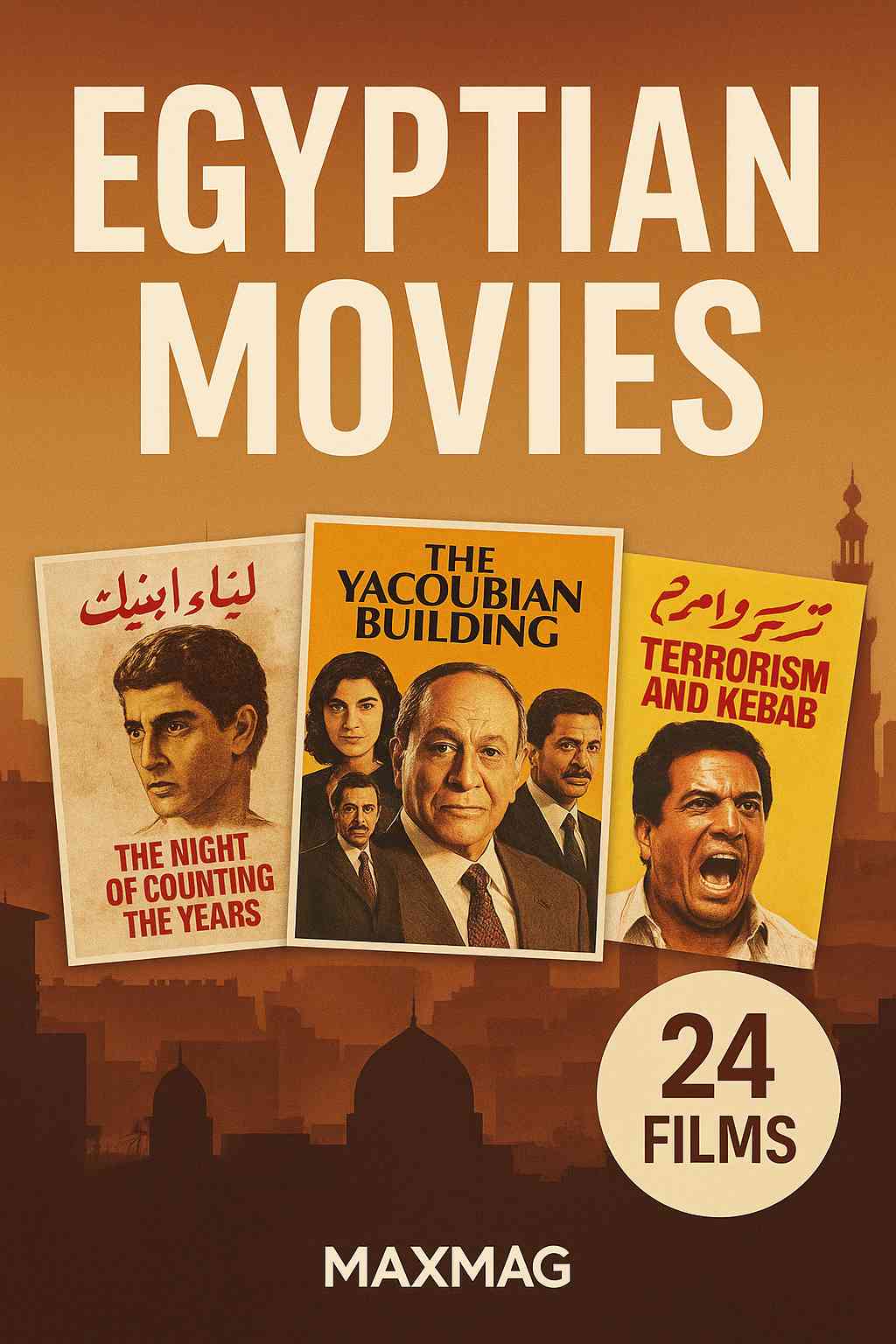
There’s a raw, unfiltered charge to films like 9 Songs that surfaces as you follow an art‑house romance defined by concert energy, quiet interludes, and physical closeness that doubles as a diary of a relationship. The seed film blends erotic drama with documentary edges, running on a story engine of fragments, live music, and everyday intimacy where the stakes are small but piercing, centred on two lovers whose private world collides with public stages and signature moments of gigs, travel, and wordless understanding.
To pick true peers, we prioritise intimate romance with believable sensuality, art‑house realism in performance and photography, concert‑infused narrative textures, and character dynamics that chart a relationship through time rather than plot twists. Our list focuses on films with tactile soundscapes, handheld or observational camerawork, and emotionally candid scenes that echo how films like 9 Songs uses music cues, ellipses, and private rituals to map connection and drift.
Jump to: Top picks | Darker options | Lighthearted picks
Where to start if you’re seeking films like 9 Songs done with sincerity and music‑soaked realism
1) Shortbus (2006)
A tender provocation, this ensemble folds musical sets and confession into a single living room of souls. The premise follows New Yorkers whose lives intersect at a salon where performance and vulnerability intermingle. The tone is exploratory and accepting, moving at a diary‑like pace that mirrors films like 9 Songs. The character dynamics hinge on honest conversation and tentative courage between lovers and friends. The setting is a DIY nightlife world that rhymes with club stages and small venues. The emotional payoff is in acceptance and the relief of being seen. If you gravitate to films like 9 Songs for open‑hearted realism, this scratches that itch. It closes with a feeling that community can be as intimate as a couple’s room.
2) Intimacy (2001)
Chéreau films a liaison with forensic calm and bruised tenderness. The premise is two adults meeting for wordless trysts that slowly demand conversation. The tone is austere, observational, and steady, like pages torn from a private journal. The character dynamics map need, boundary, and fear of exposure much like the push‑pull in films like 9 Songs. London’s side streets and rehearsal rooms give a grounded, workaday setting. The payoff arrives as harsh clarity rather than comfort. Viewers drawn to art‑house realism will recognise the unadorned choices. It leaves you with the ache of what can’t be sustained.
3) The Dreamers (2003)
Bertolucci drifts through Paris with three cinephiles bound by curiosity and touch. The premise locks friends inside an apartment while the city erupts with protests outside. The tone is languorous and candlelit, inviting reverie and risk. The character triangle mirrors the testing and tenderness that fans seek in films like 9 Songs. Paris itself becomes a curated record shelf and shrine to cinema. The emotional payoff is bittersweet awakening rather than grand romance. If intimate romance and art‑house realism appeal, this sits near the centre. The final image feels like stepping out from a private cinema into a louder street.
4) Love (2015)
Noé reconstructs a romance from shards, letting music and mood stitch the timeline. The premise is a man revisiting his great love while trying to parent and move on. The tone is melancholy, immersive, and slow‑burn. The dynamic between partners echoes the closeness and rupture that define films like 9 Songs. Interiors, bedrooms, and rain‑washed streets serve as recurring motifs. The emotional payoff is acceptance of memory’s hold, not neat closure. If you favour sensory storytelling, this deepens the same register. The closer is a quiet exhale over what remains unsaid.
5) Lie with Me (2005)
Virgo captures a fling turning into something scarier because it might be real. The premise follows two strangers who keep meeting and testing limits. The tone is frank, nocturnal, and confessional. Their push‑pull mirrors the vulnerability and drift that attract viewers to films like 9 Songs. Toronto’s clubs and apartments build a lived‑in, contemporary backdrop. The emotional payoff comes from small acknowledgements rather than speeches. If relationship chronicle stories hook you, this fits snugly. It signs off with a tentative step toward being known.
6) Nymphomaniac: Vol. I (2013)
Von Trier structures desire as a set of chapters told to a stranger. The premise is a woman recounting her life across formative encounters. The tone is analytical yet tender in flashes, with patient pacing. The character exchanges echo the candid mapping of experience found in films like 9 Songs. Rooms, trains, and alleys form an atlas of memory. The payoff is insight into patterns, not moral tidy‑up. If bedroom character study films pull you in, this is central. The ending pauses on the next unanswered question.
7) Blue Is the Warmest Color (2013)
Kechiche follows a young woman over years as first love turns formative. The premise charts school, work, and art scenes as identity takes shape. The tone is immersive and patient, letting moments breathe. The relationship rhythms resonate with why people chase films like 9 Songs. Classrooms, galleries, and kitchens give the world tactile scale. The emotional payoff is a walk‑away maturity that hurts and clarifies. If intimate romance anchored by performance is your draw, start here. The last stretch holds in quiet acceptance.
8) Room in Rome (2010)
Medem compresses a romance into one long Roman night. The premise is two travellers telling stories and testing truth until sunrise. The tone is hushed, lyrical, and gently playful. The trust‑building echoes the incremental closeness prized in films like 9 Songs. The hotel room and city soundscape feel like collaborators. The emotional payoff is a goodbye that feels like a secret shared. If you crave art‑house realism with a cosmopolitan vibe, this qualifies. The coda leaves a memory more than a plot twist.
9) Y Tu Mamá También (2001)
Cuarón pairs wanderlust with a tender education of the heart. The premise sends two friends and an older woman down Mexico’s highways. The tone is sun‑dazed and reflective, with documentary touches. The triangle’s shifts echo the tests of closeness and drift in films like 9 Songs. Beaches, diners, and roadside vistas become emotional markers. The payoff is adult understanding, not tidy romance. If music‑driven mood and observational frames appeal, this belongs. The last note is both a farewell and an awakening.
10) Shame (2011)
McQueen observes compulsion and isolation in glassy New York spaces. The premise follows a man whose controlled routines crack under pressure. The tone is rigorous, minimalist, and cool. The sibling and romantic tensions refract the vulnerability spotlighted by films like 9 Songs. Subway tunnels and skyline apartments add metallic rhythm. The emotional payoff arrives as a difficult confrontation with self. If you favour darker art‑house realism, pivot here. The fade‑out lingers on ambiguous change.
When you want darker films like 9 Songs with bruised edges and heavier fallout
11) Jeune & Jolie (2013)
Ozon films a year in a teenager’s life through four seasons and shifting selves. The premise follows experimentation that collides with family and identity. The tone is restrained and cool, with observational distance. The dynamics echo the guarded candour prized by fans of films like 9 Songs. Parisian apartments and hotel rooms become echo chambers. The payoff is a hard‑won conversation rather than closure. If art‑house realism appeals, this adds moral afterglow. The last image is a quiet reset.
12) A Bigger Splash (2015)
Guadagnino stages a tense holiday among artists and ex‑lovers. The premise brings a rock icon, a partner in recovery, and an intrusive guest together. The tone is sultry and uneasy, with patient observation. The relationships test loyalty and temptation as in films like 9 Songs. Pantelleria’s pools and terraces hum with sonic texture. The payoff mixes liberation with regret. If concert‑infused narrative whispers to you, this is a kin. The final notes echo with waves and unresolved chords.
13) Nymphomaniac: Vol. II (2013)
The second volume deepens the cost of desire measured in memory. The premise tracks escalating stakes and the search for meaning. The tone is more severe but still reflective. The confidant dynamic reframes experience like a listening room for films like 9 Songs. Industrial spaces and night streets replace earlier warmth. The payoff is a knot of choices rather than an epiphany. If intimate romance can handle shadow, continue here. It ends as a deliberate provocation.
Gentler mood shifts: light‑touch films like 9 Songs that lean tender over torrid
14) Weekend (2011)
Haigh distils a fleeting connection into something luminous. The premise follows two men over a single weekend as talk and time deepen. The tone is gentle, truthful, and unhurried. Their confessional cadence recalls why people look for films like 9 Songs. Nottingham flats and bars feel specific and lived‑in. The payoff is the grace of being changed by brief closeness. If intimate romance is your compass, this is essential. The last shot breathes with possibility.
15) Before Sunrise (1995)
Linklater captures the electricity of meeting the right person at the right hour. The premise is a night of conversation that sketches a lifetime in miniature. The tone is featherlight yet searching, paced like a favourite album side. The pair’s ebb and flow echo the honest rhythms in films like 9 Songs. Vienna’s trams and record stores add warm texture. The emotional payoff is a promise that respects uncertainty. If music‑driven mood and soft candour draw you, try this. It closes on a note that keeps playing in memory.
Conclusion — finding films like 9 Songs by mood and texture
For bruised candour with ensemble warmth, choose Shortbus or A Bigger Splash; for thornier confessionals, look to Intimacy or Nymphomaniac: Vol. I. If you want languorous cinephile romance, The Dreamers offers youthful dares, while Jeune & Jolie adds icy poise. Seek a diary‑like road with sun and melancholy in Y Tu Mamá También, or pick Shame for rigorous, steel‑blue introspection. Weekend and Before Sunrise deliver gentle school‑of‑life closeness with steady glow. For essays and craft deep dives on intimacy and realism in cinema, explore Sight & Sound by BFI and The Current by Criterion. Across this spectrum you’ll find intimate romance, erotic drama, and art‑house realism handled with taste. However you tune your night, let the music cues and whispered honesty lead the way.




